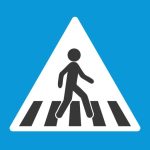Assessing the Standard Treatments for Addiction: Medication, Therapy, Substitution, and Brain Stimulation

The seventh chapter in Dr. Reinout W. Wiers’ forthcoming book, A New Approach to Addiction and Choice: Akrasia and the Nature of Free Will is titled “Pills or talk therapy,” but there’s a lot more to it. It’s a rather broad and fast survey of all the standard treatments for addiction. The bad news is that none of them work very well. The good news is the majority of addicted people recover without professional assistance.
Treating Addiction With Therapy
Dr. Wiers leans heavily on a large study from the 1990s that compared three types of therapy in treating alcohol use disorder. The first was based on Alcoholics Anonymous (AA) and featured self-help groups. The second received cognitive behavioral therapy (CBT), which helps to correct problem thought processes and control urges. The third received motivational interviewing (MI), which is based on the subject envisioning their future and a path to get there.
And the winner is? Alcohol! Regardless of the therapy used, half of the subjects relapsed within a year, and 70% within three years. The main reason for returning to drinking was dropping out of therapy, leading Dr. Wiers to conclude, “[M]any people need some guidance to stay motivated to tackle their problems. This can be done by a counselor, but maybe also with smart chatbots, as we and others have started to investigate.” The smartphone can be a conduit to a coach, or a prearranged activity to use in stressful situations, or a peer group that helps the recovering person stay on track.
Treating Comorbid Addictions
Comorbidity is the unfortunate term for having multiple behavioral and/or substance use issues simultaneously. Mental health problems and substance use problems go hand in hand, and it is difficult to tell how each encourages the other. When it comes to depression, Dr. Wiers says the science is unambiguous: If you successfully treat the addiction, the depression often disappears after detoxification. However, with smoking and drug or alcohol addiction, it is best to shut them down simultaneously. Dr. Wiers cites the sobering statistic that up to “one-half of the people with an alcohol or drug problem eventually die from the effects of smoking.”
Treating Addiction With Medications
Dr. Wiers looks at many different pharmaceutical treatments for drug and alcohol addiction and the science is disappointing. Most are slightly better than a placebo, no better than therapy, and not significantly better with both therapy and drugs. The treatments examined include:
- disulfiram — blocks the breakdown of alcohol in the stomach. However, since the effect is not immediate, it’s “likely that they will drink anyway after taking the medication,” getting both drunk and sick.
- naltrexone — blocks euphoria and cravings and has a small positive effect over a placebo. Works better for “reward drinkers” than “avoidance drinkers.”
- acamprosate — a neurotransmitter that targets the same regions of the brain as alcohol. Supposedly it works better on “avoidance drinkers” rather than “reward drinkers.”
- baclofen — a muscle relaxer. Wiers tells the story of a years-long randomized, controlled trial he led that did not generate a statistical advantage to using baclofen, despite a non-controlled trial showing improvement for half the participants two years out.
- nalmefene — perhaps the most interesting drug discussed, it is designed for people who want to drink less but don’t want to abstain. Dr. Wiers notes wryly that, “[M]ost people with a drinking problem want exactly that.”
Unfortunately, GLP-1 agonist drugs, such as Ozempic, Mounjaro and Wegovy, were not included in Dr. Wiers’ survey, perhaps because trials have barely begun on using these weight loss drugs for addiction treatment. None of the pharmaceutical solutions surveyed is much better than CBT or a placebo. Dr. Wiers says that, on average, one person out of 12 will stay abstinent thanks to a pharmaceutical intervention. Again, the results with therapy alone are not any better, and the combo of medicine plus therapy is also not significantly better.
Treating Addiction With Brain Stimulation
There are some surprisingly positive results to report on treating substance use disorders with brain stimulation. Dr. Wiers is involved in the study of transcranial direct current stimulation (tDCS) and transcranial magnetic stimulation (TMS), which are non-invasive methods for delivering low-voltage current to targeted areas of the brain. Once again, the treatments provided a small positive impact. It is possible they magnify the effects of either medication or therapy, or both.
The use of invasive deep brain stimulation for addiction treatment came about as the result of using the surgical technique to treat severe psychiatric disorders. It had the side effect of eliminating alcohol cravings for some patients. Dr. Wiers cites a study on deep brain stimulation to treat therapy-resistant alcoholism:
[T]wo of the five patients achieved long-term abstinence, while the others successfully reduced their drinking.
Treating Addiction With Substitution Therapy
As we have seen here at AddictionNews, substitution is a powerful tool for getting people unhooked on harmful substances or behaviors by shifting them to something less harmful. Nicotine replacement therapy is an example of a substitution with a slightly positive track record. Dr. Wiers talks about a colleague of his, Dr. David Nutt, who is developing a kind of alcohol that is less physically damaging, but still intoxicating, called “Alcarelle” (now rebranded as GABA Labs).
Certainly one of the most surprising studies in the book involved hardcore heroin addicts who received a therapy where 23%, or one out of four, showed significant improvement. Compare this to one out of 12 for CBT or any of the other treatments discussed in this chapter. What was the magical treatment that unhooked hardened heroin users?
Heroin.
That’s right! In a clinical study, some of the addicts were given the standard methadone treatment. Some received that plus maintenance levels of heroin. A third cohort received the heroin after six months on the methadone. The people who received the heroin had higher recovery rates than those who did not. How is this possible?
Researchers attribute the reduction in the use of heroin to the reduced stress from not having to worry about where to get it or how to pay for it. “The beneficial effects seem to be primarily related to the elimination of stress,” writes Dr. Wiers. How surprising that reducing the thing that causes people to turn to mind-altering substances — stress — reduces their use of mind-altering substances.
Next week on AddictionNews, we’ll look at the relationship between stress and behavioral or substance addictions with an eye toward seeing whether reducing stress has a direct impact on these disorders.
Written by Steve O’Keefe. First published September 12, 2024.
Sources:
A New Approach to Addiction and Choice: Akrasia and the Nature of Free Will, by Reinout W. Wiers, to be published by Routledge in 2025.
“Non-invasive and invasive brain stimulation in alcohol use disorders: A critical review of selected human evidence and methodological considerations to guide future research,” Comprehensive Psychiatry, August 2021.




